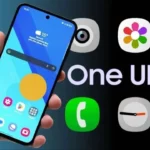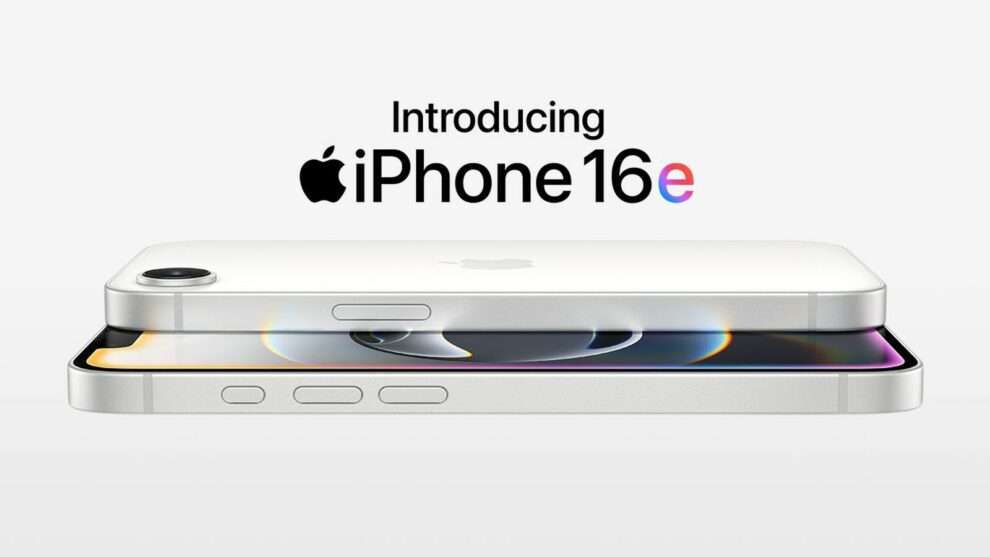Apple’s latest addition to its lineup, the iPhone 16e, has sparked a wave of mixed reactions since its announcement. While it boasts some impressive hardware upgrades and cutting-edge technology, many critics argue that the device misses the mark when it comes to delivering what consumers truly value in a smartphone today. In an era where AI dominates headlines, Apple seems to have prioritized artificial intelligence over features like camera quality and versatility—features that remain at the forefront of most users’ priorities.
The iPhone 16e positions itself as a midrange offering, priced at $599, bridging the gap between entry-level devices and flagship models. However, this positioning raises questions about whether the phone truly offers enough value for its price tag. For instance, despite being equipped with Apple’s latest A18 chip—a state-of-the-art processor built on 3nm technology—the 16e lacks key elements that define modern smartphones, particularly in the area of photography. At a time when phones are increasingly relied upon as primary cameras, the decision to include only a single rear lens feels especially puzzling.
To understand why this omission is so glaring, consider the broader smartphone landscape. Competitors like Google’s Pixel 8a and Nothing’s Phone 2a offer compelling alternatives at similar or lower price points. Both devices feature dual-camera setups, providing greater flexibility for users who want to capture everything from wide-angle landscapes to close-up portraits. Moreover, these rivals boast fresh designs and additional perks such as high-refresh-rate displays, making them more appealing to budget-conscious buyers seeking well-rounded experiences.
The Camera Conundrum
For most people, their smartphone serves as their go-to camera. Whether documenting family gatherings, capturing travel memories, or sharing moments on social media, the quality and versatility of a phone’s camera system play a critical role in shaping user satisfaction. Historically, Apple has excelled in this domain, consistently pushing boundaries with innovative imaging technologies. Yet, the iPhone 16e takes a step backward by relying solely on a single rear camera, forcing users to rely on digital zooming techniques like 2x telephoto cropping instead of true optical lenses.
This choice becomes even harder to justify when compared to other offerings in the market. Take the Pixel 8a, for example. Priced at $499 (and often available for less), it delivers two exceptional rear cameras powered by Google’s Tensor G3 chip. This setup not only ensures superior image quality but also integrates seamlessly with advanced computational photography features, enhancing everything from low-light performance to portrait modes. Similarly, the Nothing Phone 2a offers comparable camera capabilities while undercutting the 16e significantly in terms of cost, retailing for just $349.
AI vs. Practicality
Another point of contention lies in Apple’s decision to emphasize AI integration over practical features. The iPhone 16e is marketed as a platform for Apple Intelligence, the company’s suite of AI-driven tools designed to enhance productivity, personalization, and convenience. However, early feedback suggests that these features fall short of expectations. Notification summaries, one of the marquee attractions of Apple Intelligence, were recently paused due to issues with accuracy and relevance. Such setbacks undermine the perceived value of the software ecosystem, leaving customers questioning whether the inclusion of AI was worth sacrificing other essential components.
Furthermore, the emphasis on AI highlights a fundamental disconnect between what Apple believes consumers want and what they actually prioritize. While AI undoubtedly holds promise for transforming various aspects of daily life, its utility remains limited for many users. In contrast, features like robust camera systems, long-lasting batteries, and durable builds continue to rank highly among consumer preferences. By focusing too heavily on AI, Apple risks alienating those who seek reliable, well-rounded devices rather than experimental tech showcases.
Pricing and Perception
At $599, the iPhone 16e sits awkwardly within Apple’s product hierarchy. On one hand, it represents a significant upgrade over previous SE models, incorporating improvements such as an OLED display and enhanced battery life. On the other hand, its premium pricing diminishes its appeal as a budget-friendly option. When placed alongside competitors offering better value propositions, the 16e struggles to justify its cost.
Consider the original iPhone SE series, which carved out a niche as an affordable yet capable alternative to flagship iPhones. Despite sporting older designs and smaller screens, SE models succeeded because they delivered strong performance at reasonable prices. The iPhone 16e attempts to延续 this legacy, but its higher price point erodes much of the allure. Buyers now face tough choices: pay extra for a device that compromises on key features or opt for rival products that strike a better balance between affordability and functionality.
Lessons Learned
Ultimately, the reception of the iPhone 16e serves as a reminder of the importance of aligning product development with consumer needs. While innovation is crucial, it must be grounded in tangible benefits that resonate with users. In the case of the 16e, Apple appears to have misjudged the trade-offs consumers are willing to make. Instead of prioritizing areas like camera quality and overall usability, the company doubled down on AI—an area where it currently lags behind competitors in terms of both execution and adoption.
Looking ahead, Apple faces a pivotal challenge: redefining its strategy to ensure future releases better reflect customer expectations. This may involve reassessing how resources are allocated across different tiers of the iPhone lineup or investing further in technologies that directly address user pain points. As the smartphone market continues to evolve, staying attuned to shifting demands will be vital for maintaining relevance and competitiveness.
In conclusion, the iPhone 16e exemplifies the dangers of losing sight of what truly matters to consumers. While its focus on AI reflects Apple’s ambitious vision for the future, it does so at the expense of features people care about today. For a brand synonymous with excellence, this misstep underscores the need for greater alignment between technological aspirations and real-world priorities. Only by recalibrating its approach can Apple hope to regain the trust and loyalty of its diverse audience.
















Add Comment